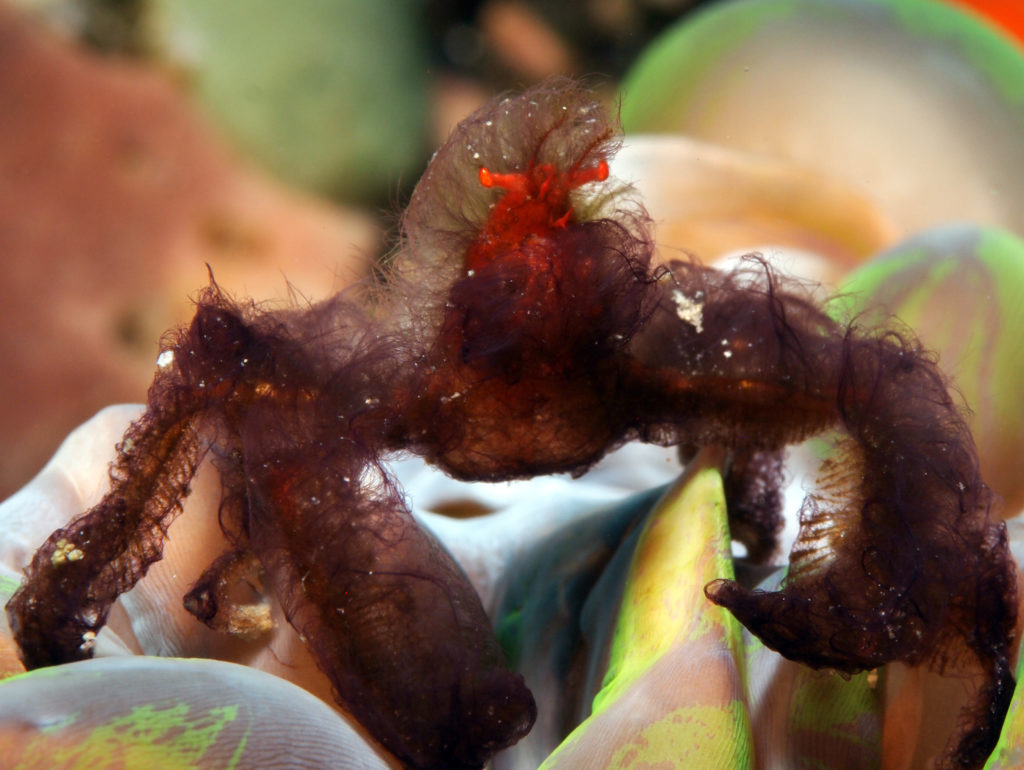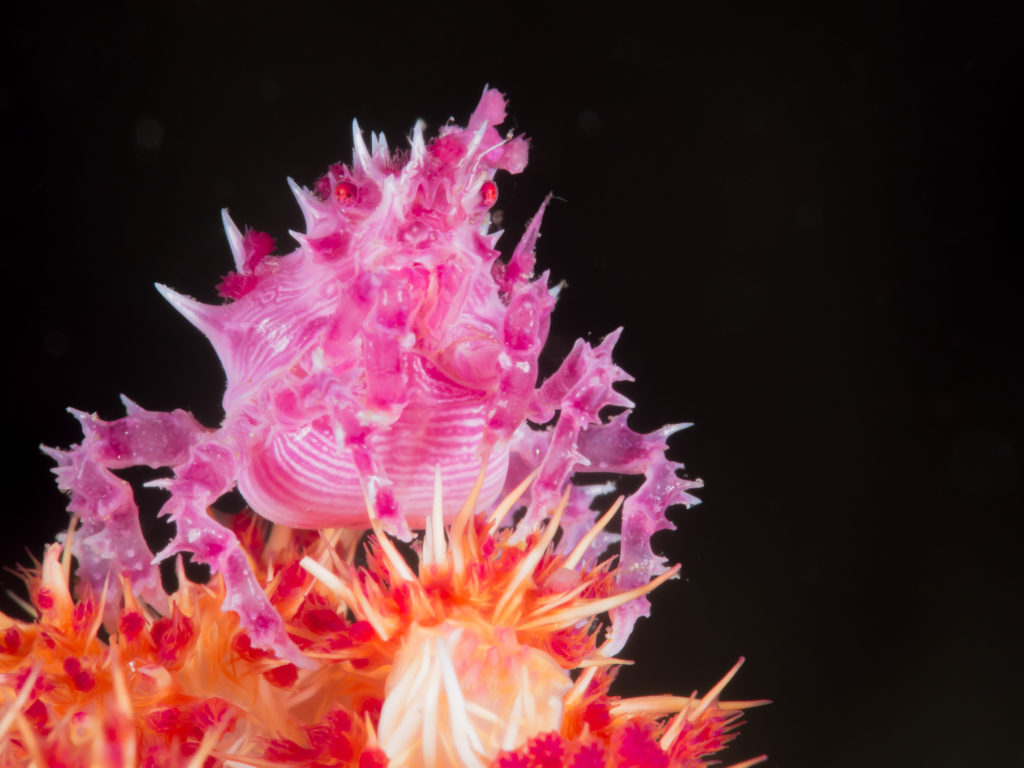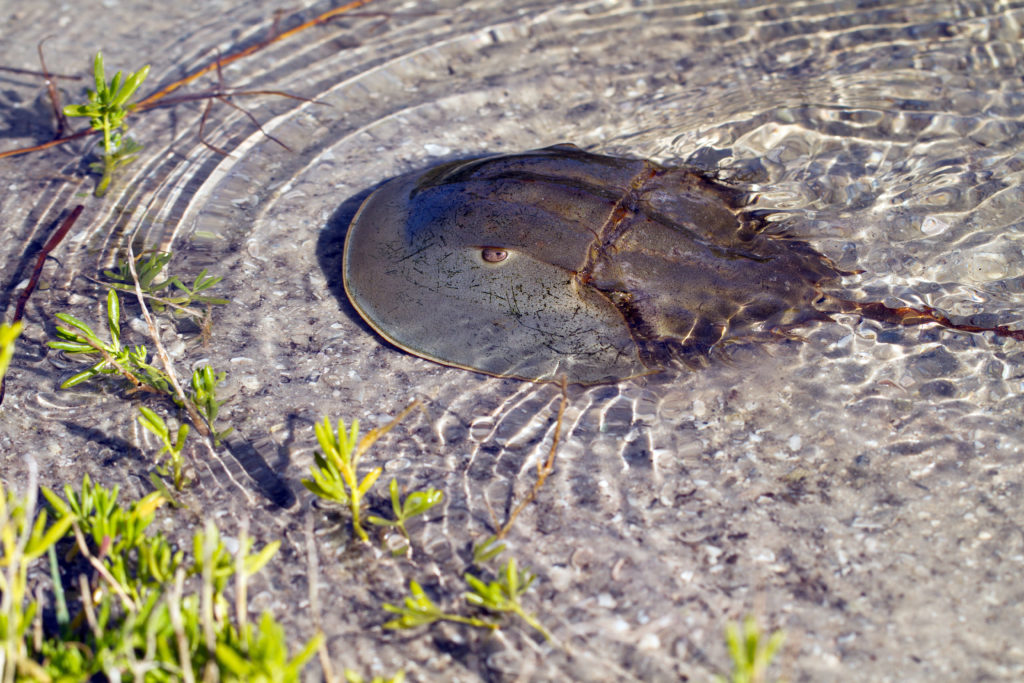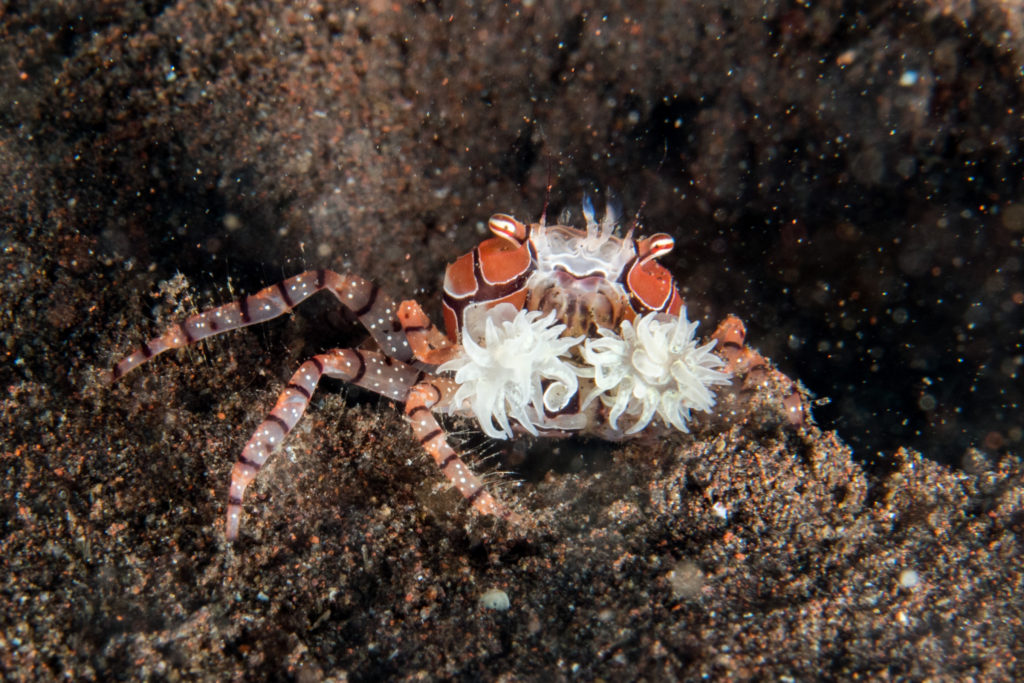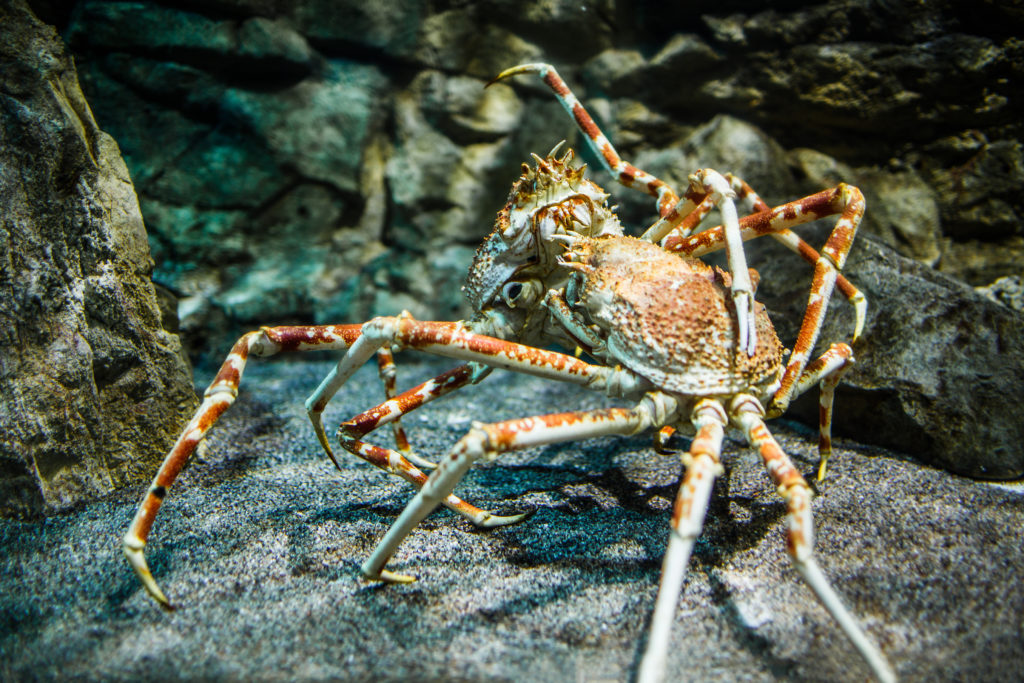As divers, we spend a lot of time chasing the ocean’s big thrills, whether sharks or rays, whales or dolphins. Sometimes though, it’s worth taking a closer look at the marine environment’s smaller inhabitants. These macro species build their homes amidst the nooks and crannies of the reef. It takes dedication and a diligent eye to find them. From technicolor nudibranchs to shrimp with almost superhuman abilities, plenty of weird and wonderful characters inhabit the smaller end of the scale. Crabs are among the most fascinating of these macro creatures. They come in an almost endless array of shapes, sizes and colors. Here we’ll take a look at five amazing crab species in the underwater world.
Orangutan Crab
Those of you who have dived the central Indo-Pacific may have encountered the fantastically named orangutan crab. This amazing crab species looks as much like its namesake as it’s possible for a crab to look. With a carapace measuring just 0.8 inches (2 cm), orangutan crabs can be difficult to spot unless you know where to search for them. They favor the bubble coral Plerogyra sinuosa, and a careful inspection of this species’ white-veined globes will often result in a sighting of this bizarre looking animal.
Orangutan crabs have a shaggy coat of thick red hair covering their bodies and also their long legs, which are typical of the spider crab family to which they belong. The fur that distinguishes these crabs is not purely ornamental; rather, it catches microscopic plankton and bits of edible debris. The orangutan crab then transfers the food caught in its fur to its mouth as it grooms itself with its long pincers.
Candy Crab
You’ll also find the Oates’s soft-coral crab, also known as the commensal soft-coral crab, or candy crab, in the Indo-Pacific’s warm, shallow waters. Scientists named this crab for its spectacularly vibrant colors. The candy crab camouflages itself according to the shade of the soft coral in which it lives, and it can be white, pink, yellow or red. Pointed spines cover its carapace and often the candy crab adds to its camouflage by selecting polyps from its host coral and attaching them to its body. You’ll find this planktivorous species, which grows only up to 0.8 inches (2 cm), among the spines of Dendronephthya soft corals. The candy crab is the only species in its genus. This means that it is not only exceptionally beautiful, but also completely unique.
Horseshoe Crab
Possibly the strangest-looking of all crab species, the ancestors of the horseshoe crab date back over 450 million years. Because of this, scientists consider it a living fossil, which this amazing crab species prehistoric appearance certainly reflects. A dome-shaped carapace covers its entire body, and the crab uses a long tail to right itself should it accidentally become overturned. There are four living species of horseshoe crab, three of which are found in Southeast and East Asia. You can find the fourth in the Gulf of Mexico and along the Atlantic coast of the United States.
Strictly speaking, the horseshoe crab is not a true crab at all. It is more closely related to arachnids than to crustaceans. Because it has no hemoglobin, the copper-based blood of the horseshoe crab is blue. It contains a substance that can be used to detect bacterial toxins. Each year, humans harvest the blood of horseshoe crabs via a non-lethal procedure so that it can be used to test the sterility of medical equipment and intravenous drugs.
Pom-pom Crab
Also known as the boxer crab, this family of crabs associates with anemones in an example of truly mutually beneficial symbiosis. This amazing crab species typically carries an anemone around in each of its claws, which it uses to defend itself from would-be predators. The anemones’ stinging cells grant the crabs safe passage around the seafloor. In return, the crabs offer the anemones mobility, exposing them to a wider food source.
In the end, the pom-pom crabs get the best deal out of the relationship, however, as they also feast on the food particles trapped by the anemone’s waving tentacles. These small crabs are photogenic in their own right, with banded legs and a trapezoid carapace covered in geometric blocks of color. Although you’ll usually see them with attending anemones, pom-pom crabs can survive without them. Divers and scientists have documented the crabs substituting pieces of sponge or coral for anemones.
Japanese Spider Crab
The Japanese spider crab has the largest leg span of any living arthropod. As such, we cannot technically consider it a macro species. It does, however, demonstrate the incredible diversity of crabs as a group of animals. It weighs up to 42 pounds (19kg) and measures up to 12 feet (3.8 m) wide. These giant crabs can survive at depths of up to 2,000 feet (600 m). This typically deep-water species is found no shallower than 160 feet (50m). They eat both plant and animal matter, and scientists have documented them scavenging on the corpses of larger animals. Scientists thing the Japanese spider crab is not only the largest crab in the world but also the longest living, with an estimated lifespan of up to 100 years.


